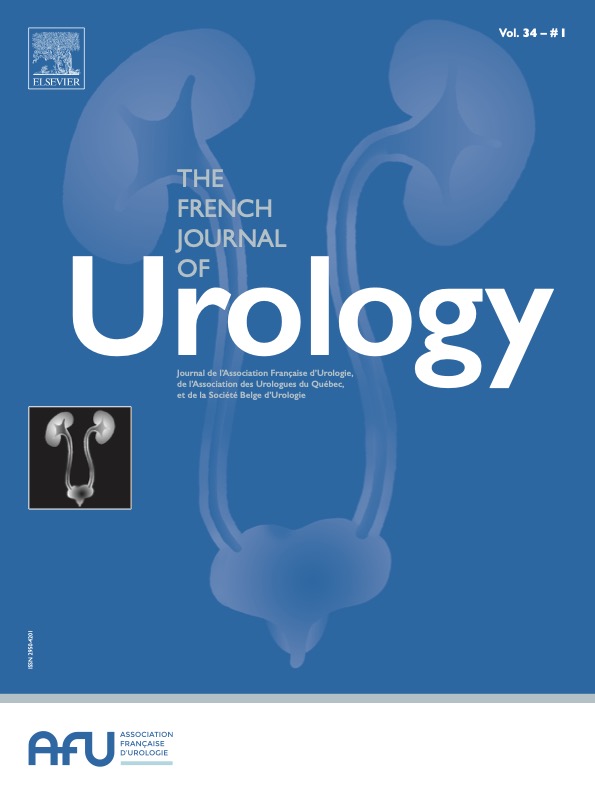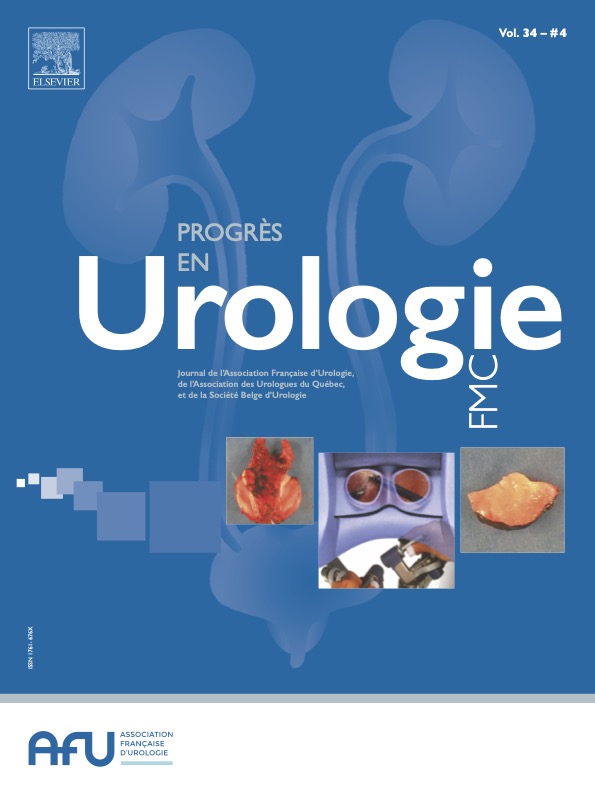| | | 2022 Recommendations of the AFU Lithiasis Committee: Radiation protection in the operating theater Recommandations 2022 du Comité lithiase de l’AFU : radioprotection au bloc opératoire | | | | French operators who use ionizing radiation in the operating room must have a certificate attesting that they underwent training in radiation protection for health professionals and another certificate of training in radiation protection for patients. Reducing the doses delivered to the patient also decreases the doses delivered to the operators and their assistants. It has been shown that the relative risk of cancer is higher in patients with urinary stone disease, likely due to the repeated radiological exams and procedures under fluoroscopic guidance [1]. Most studies demonstrated that during procedures performed in the operating room, the delivered doses were inversely correlated with the operator's experience and with the implementation of technical protocols for dose reduction [2, 3]. After two years of experience, residents in urology saw their delivered doses decrease by nearly 80% [4]. Moreover, the implementation of dose reduction protocols can reduce the delivered doses by ∼30% in both ureterorenoscopy and percutaneous nephrolithotomy [5, 6, 7]. Several studies showed that the doses delivered during ureterorenoscopy were lower than those delivered during PCNL. Moreover, with PCNL the doses delivered further increased in case of multiple tracts [8, 9, 10, 11] and radio-guided puncture [10, 12, 13]. Similarly, the dose delivered during percutaneous access was lower when using high-pressure dilatation balloons than concentric metallic dilatators [14, 15, 16]. The use of lead curtains during endoscopic procedures also reduced the radiation doses delivered to the operator by 80% [17]. During extracorporeal shock wave lithotripsy (ESWL), the delivered doses were correlated with the intervention duration and the use of fluoroscopy; they decreased when real-time ultrasound stone localization devices were used [18, 19].
| | Conclusions of the literature data | • | The doses delivered during endoscopic procedures decrease with the urologist's experience [level of evidence (LOE) 3].
| • | Training in radiation protection and the use of protocols reduce the use of ionizing radiation in the operating room (LOE3).
| • | Ureteroscopy exposes to less radiation than PCNL (LOE4).
| • | The use of one-stage dilatator systems for PCNL tracts generates less radiation than the use of concentric dilatators (LOE3).
| • | Lead curtains are effective for protecting the operators (LOE2).
|
Recommendation Table 1 Les praticiens qui utilisent les radiations ionisantes au bloc opératoire doivent être titulaires de l’attestation de formation à la radioprotection des personnels et de l’attestation de formation à la radioprotection des patients. Réduire les doses délivrées au patient permet aussi de réduire les doses délivrées à l’opérateur et à ses aides. Il a été montré qu’il existait un risque relatif de cancer plus élevé chez les patients lithiasiques, sans doute corrélé à la répétition des examens radiologiques et des interventions sous contrôle radioscopique [1]. La plupart des études ont montré que, lors des interventions réalisées au bloc opératoire, les doses délivrées étaient inversement corrélées à l’expérience de l’opérateur et à l’application de protocoles techniques de réduction des doses [2, 3]. Après deux années d’expérience, les urologues en formation ont vu leurs doses délivrées baisser de près de 80 % [4]. Il a été également montré que les doses délivrées après protocoles de réduction des doses pouvaient être diminuées d’environ 30 %, aussi bien en URRS qu’en NLPC [5, 6]. Les doses délivrées lors d’une URSS étaient plus faibles que celles délivrées lors d’une NLPC pour laquelle elles augmentaient encore en cas de tunnels multiples [7, 8, 9, 10] et de ponction radioguidée [9, 11, 12]. De même, l’utilisation d’un ballon de dilatation haute pression était moins irradiante que celle des dilatateurs métalliques concentriques [13, 14, 15]. L’utilisation des rideaux plombés lors des interventions endoscopiques a aussi permis de réduire les doses délivrées à l’opérateur de 80 % [16]. Concernant la LEC, les doses délivrées étaient corrélées à la durée du traitement et à l’utilisation de la radioscopie ; elles diminuaient en cas d’utilisation de dispositifs échographiques de localisation des calculs en temps réel [17, 18].
| | Conclusions des données de la littérature | • | Les doses délivrées lors des actes d’endoscopie diminuent avec l’expérience des urologues (NP3).
| • | La formation à la radioprotection et l’utilisation de protocoles permet de réduire l’utilisation des radiations ionisantes au bloc opératoire (NP3).
| • | L’URSS est moins irradiante que la NLPC (NP4).
| • | L’utilisation de systèmes de dilatation en un temps pour les trajets de NLPC génère moins d’irradiation que l’utilisation des dilatateurs concentriques (NP3).
| • | Les rideaux de protection suspendus à la table sont efficaces pour protéger les opérateurs (NP2).
|
Tableau de recommandations 1 The authors declare that they have no competing interest. | | | |
Recommendation Table 1 - Radioprotection.
|

Tableau de recommandations 1 - Radioprotection.
|
 | |
| Yecies T.S., Semins M.J. Modeling the incidence of secondary malignancy related to ionizing radiation use in the management of nephrolithiasis Urology 2019 ; 130 : 48-53 [inter-ref] | | | Hein S., Wilhelm K., Miernik A., Schoenthaler M., Suarez-Ibarrola R., Gratzke C., et al. Radiation exposure during retrograde intrarenal surgery (RIRS): a prospective multicenter evaluation World J Urol 2021 ; 39 : 217-224 [cross-ref] | | | Hsi R.S., Harper J.D. Fluoroless ureteroscopy: zero-dose fluoroscopy during ureteroscopic treatment of urinary-tract calculi J Endourol 2013 ; 27 : 432-437 [cross-ref] | | | Weld L.R., Nwoye U.O., Knight R.B., Baumgartner T.S., Ebertowski J.S., Stringer M.T., et al. Fluoroscopy time during uncomplicated unilateral ureteroscopy for urolithiasis decreases with urology resident experience World J Urol 2015 ; 33 : 119-124 [cross-ref] | | | Labate G., Modi P., Timoney A., Cormio L., Zhang X., Louie M., et al. The percutaneous nephrolithotomy global study: classification of complications J Endourol 2011 ; 25 : 1275-1280 [cross-ref] | | | Canales B.K., Sinclair L., Kang D., Mench A.M., Arreola M., Bird V.G. Changing default fluoroscopy equipment settings decreases entrance skin dose in patients J Urol 2016 ; 195 : 992-997 [cross-ref] | | | Hanna L., Walmsley B.H., Devenish S., Rogers A., Keoghane S.R. Limiting radiation exposure during percutaneous nephrolithotomy J Endourol 2015 ; 29 : 526-530 [cross-ref] | | | Vassileva J., Zagorska A., Basic D., Karagiannis A., Petkova K., Sabuncu K., et al. Radiation exposure of patients during endourological procedures: IAEA-SEGUR study J Radiol Prot 2020 ; 40 : | | | Ozbir S., Atalay H.A., Canat H.L., Culha M.G., Cakır S.S., Can O., et al. Factors affecting fluoroscopy time during percutaneous nephrolithotomy: Impact of stone volume distribution in renal collecting system Int Braz J Urol 2019 ; 45 : 1153-1160 [cross-ref] | | | Balaji S.S., Vijayakumar M., Singh A.G., Ganpule A.P., Sabnis R.B., Desai M.R. Analysis of factors affecting radiation exposure during percutaneous nephrolithotomy procedures BJU Int 2019 ; 124 : 514-521 [cross-ref] | | | Demirci A., Raif Karabacak O., Yalçınkaya F., Yiğitbaşı O., Aktaş C. Radiation exposure of patient and surgeon in minimally invasive kidney stone surgery Prog Urol 2016 ; 26 : 353-359 [inter-ref] | | | Usawachintachit M., Masic S., Allen I.E., Li J., Chi T. Adopting ultrasound guidance for prone percutaneous nephrolithotomy: evaluating the learning curve for the experienced surgeon J Endourol 2016 ; 30 : 856-863 [cross-ref] | | | Jagtap J., Mishra S., Bhattu A., Ganpule A., Sabnis R., Desai M.R. Which is the preferred modality of renal access for a trainee urologist: ultrasonography or fluoroscopy? Results of a prospective randomized trial J Endourol 2014 ; 28 : 1464-1469 [cross-ref] | | | Yildirim B., Ates M., Karalar M., Akin Y., Keles I., Tuzel E. Effects of dilatation types during percutaneous nephrolithotomy for less radiation exposure: a matched-pair pilot study Wien Klin Wochenschr 2016 ; 128 : 53-58 [cross-ref] | | | Amirhassani S., Mousavi-Bahar S.H., Iloon Kashkouli A., Torabian S. Comparison of the safety and efficacy of one-shot and telescopic metal dilatation in percutaneous nephrolithotomy: a randomized controlled trial Urolithiasis 2014 ; 42 : 269-273 [cross-ref] | | | Zeng G., Zhao Z., Zhong W., Wu K., Chen W., Wu W., et al. Evaluation of a novel fascial dilator modified with scale marker in percutaneous nephrolithotomy for reducing the X-ray exposure: a randomized clinical study J Endourol 2013 ; 27 : 1335-1340 [cross-ref] | | | Inoue T., Komemushi A., Murota T., Yoshida T., Taguchi M., Kinoshita H., et al. Effect of protective lead curtains on scattered radiation exposure to the operator during ureteroscopy for stone disease: a controlled trial Urology 2017 ; 109 : 60-66 [inter-ref] | | | Hassanpour N., Panahi F., Naserpour F., Karami V., Fatahi Asl J., Gholami M. A study on radiation dose received by patients during extracorporeal shock wave lithotripsy Arch Iran Med 2018 ; 21 : 585-588 | | | Abid N., Ravier E., Promeyrat X., Codas R., Fehri H.F., Crouzet S., et al. Decreased radiation exposure and increased efficacy in extracorporeal lithotripsy using a new ultrasound stone locking system J Endourol 2015 ; 29 : 1263-1269 [cross-ref] | |
| | | | | |
© 2023
Elsevier Masson SAS. Tous droits réservés. | | | | |
|









